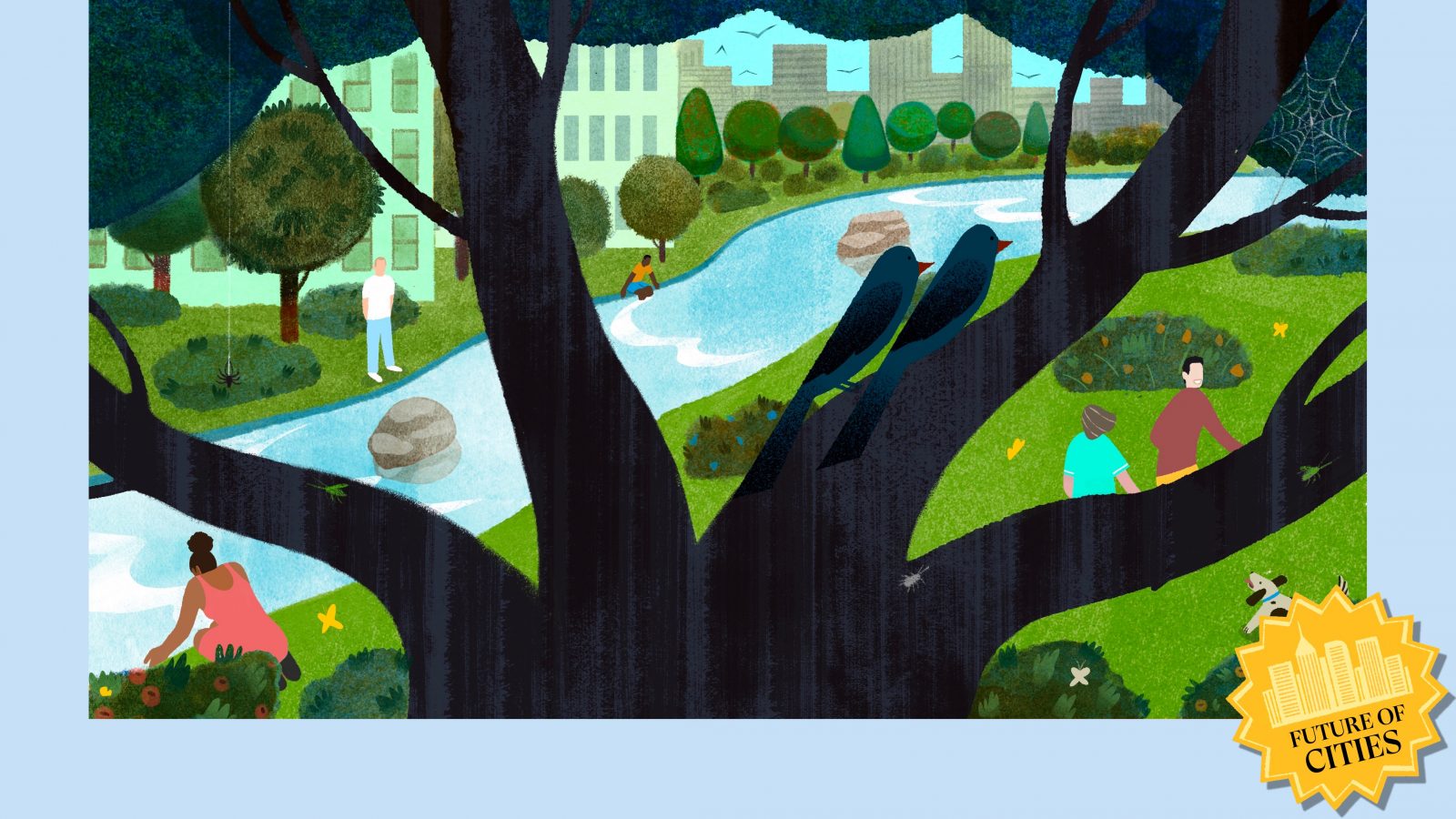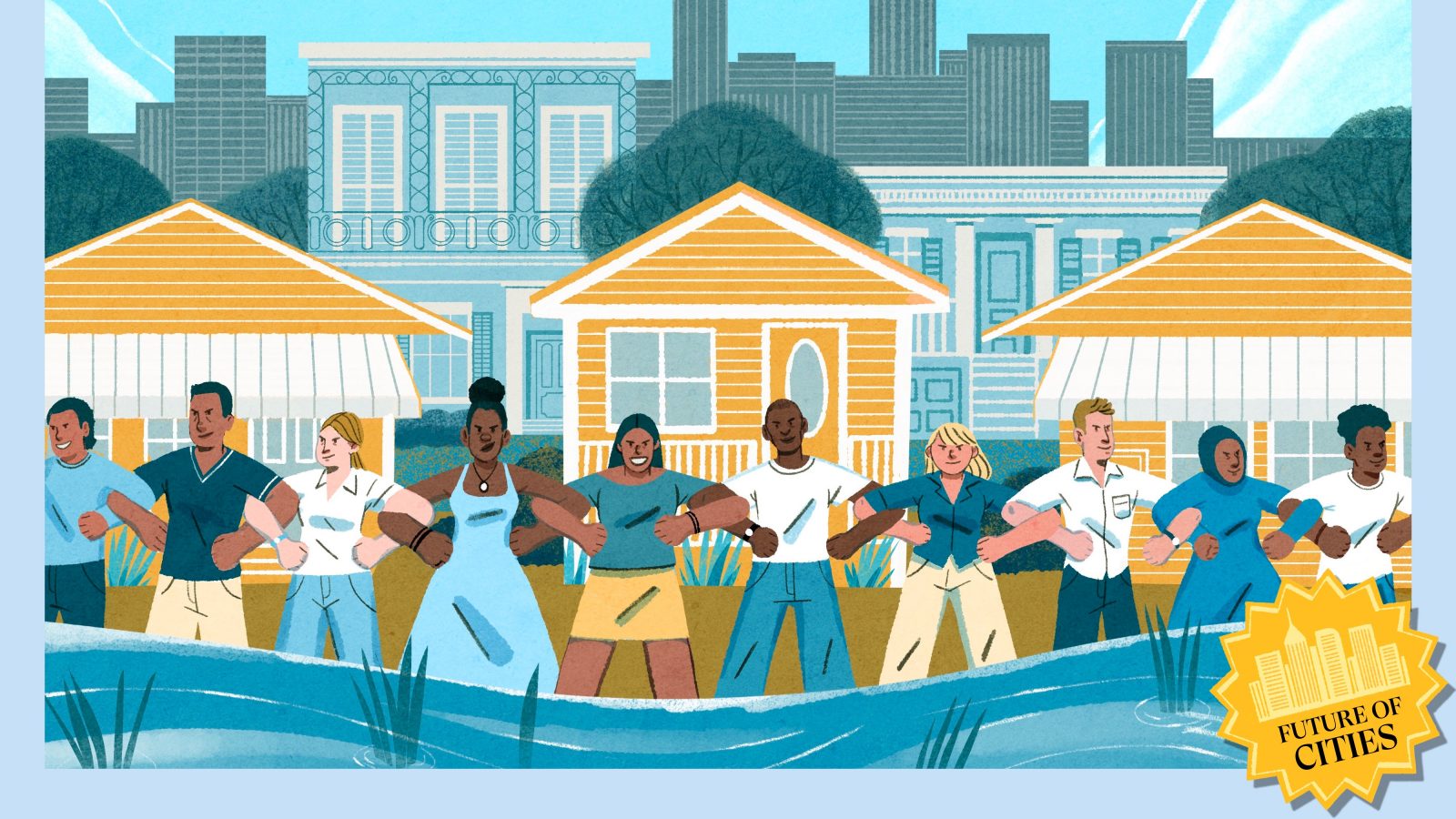As the climate changes, cities must change with it. Fix is exploring how our urban centers are being reimagined and what green, equitable, and resilient communities could look like. With insights from local officials, architects, residents, and more, our Sustainable Cities of the Future series examines how we’ll live, work, and play in the cities of tomorrow. (Explore the full series so far.)
President Joe Biden has pledged to protect 30 percent of the nation’s land and oceans by 2030. During last month’s Earth Day Climate Summit, other world leaders committed to the target in their countries as well. The Thirty by Thirty Resolution to Save Nature refers to remaining “wilderness-quality land and ocean” and focuses on a “large-landscape scale that is biologically and ecologically meaningful.” A report titled “America the Beautiful,” prepared by several federal agencies for the National Climate Task Force, describes a 10-year campaign to meet the 30×30 goal. While it mentions parks and access to nature, cities are largely — and nonsensically — absent.
Vital and meaningful ecosystems exist within urban and industrial areas. They play a huge role in supporting biodiversity and human health while buffering climate impacts locally and regionally. They deserve — and need — big, bold protection policy.
Climate targets like 30×30 are based on sophisticated models for balancing rising CO₂ and global average temperatures by protecting carbon-sequestering earth systems. They typically focus on areas that are already climate resilient and biodiverse, such as dense forests and seashores with precious marine life habitats. “Protection” typically means banning or limiting human activities like building, logging, farming, hunting, fishing, and recreation, but as the“America the Beautiful” report makes clear, the focus of 30×30 is on conservation, a category of protection that encompasses some land use, and restoration, which ecologically regenerates land that’s been damaged or polluted and then conserves it. That makes urban land and waters great candidates for inclusion in 30×30.
Help us imagine the sustainable cities of the future. We want to hear what you’re seeing today that’s exciting, or your biggest ideas for the future.
In truth, we can’t “save nature” without addressing the role that urban and industrial development plays in climate change. This is an issue of climate justice: The burdens of urban pollution and ecological damage are disproportionately carried by Black, brown, and low-income communities. As the Center for American Progress has argued, 30×30 should prioritize equity and “reverse the rapid decline of [the nation’s] natural systems.”
Some of the United States’ most egregious ecological problems originate in urban, industrial, and agricultural infrastructure. For example, in dense areas like Detroit and Chicago, aging sewer systems cannot handle increasingly intense, climate-driven storms, leading to widespread flooding and sewage overflows into adjacent waterways.
Across the Great Lakes, more than two dozen shorelines, designated as “areas of concern” by the Environmental Protection Agency, are so heavily degraded and toxic they present severe water quality risks for people, fisheries, and habitats in the Great Lakes, which contain 95 percent of the continent’s fresh water.
The industrialization of agriculture during the last 150 years has resulted in elaborate irrigation and drainage systems that leech nitrogen and phosphorus into the soil. These chemicals make their way into the Mississippi River, depleting the waterway of oxygen and impacting habitats and livelihoods as far south as the Gulf of Mexico.
These patterns of ecological degradation and risk must be part of climate modeling and governance. Notably, cities and industries often occupy some of the most ecologically rich areas of the continent: coastal areas and rivers. Displaced species need urban land and water to be protected in order to survive. As do humans. It would be counterproductive and unjust to continue to neglect critical ecosystems in some places while protecting them in others.
Legislators should thus expand the range of what land and waters fall under 30×30 protections. They should immediately engage environmental justice and conservation organizations to map all urbanized regions of the U.S. by their ecological, social, and economic values for inclusion in the 30×30 program, highlighting areas for urgent restoration and conservation. More than 70 mayors have signed a letter of support for 30×30.
For example in Chicago, a city emblematic of climate injustice, upward of 80 percent of the land is developed and only 10 percent is parks. Conservationists and landscape architects could designate an ecological network comprising 30 percent of urban land and water into regional climate adaptation plans, including cleaning up and transforming places of toxic air, soil, and water in the sacrifice zones of Chicago. Residents are already “engaged in serious uphill battles to protect [their] precious water resources,” leading Chicago park advocate Juanita Irizarry recently told the Chicago Tribune.
In Australia, the city of Melbourne’s 2017 “Nature in the City” plan is a great model of urban ecosystem protection. It is informed by the city’s human and natural history, and charts anticipated population growth and climate impact. Among its priorities is a 20 percent increase of understory plants (the shrubs, grasses, and other vegetation that thrive beneath canopy trees) on public land by 2027, because research shows that ecological diversity is four times higher in an understory habitat than in a simple landscape of trees.
The 30×30 goal is an incredible step toward enforceable ecosystem protection, and to be fair, it does include an objective to work with local communities and Indigenous tribes and “to improve access to nature by all people.” But that should not mean getting in a car to visit a national park. Eighty percent of Americans live in urban areas. They need nature restored and protected right where they live and breathe. So do nonhuman species.
Numerical targets don’t quite express how critical ecological interdependence is for our survival, but if using numbers helps us act, the earth and its inhabitants stand a better chance.
Mary Pat McGuire is associate professor in the Department of Landscape Architecture at the University of Illinois Urbana-Champaign, director of Water Lab in Chicago, and co-editor of Fresh Water: Design Research for Inland Water Territories. She is a 2020–2021 public voices fellow of The OpEd Project.
The views expressed here reflect those of the author. Fix is committed to publishing a diversity of voices. Got a bold idea or fresh news analysis? Submit your op-ed draft, along with a note about who you are, to fix@grist.org.
Explore more in our series on Sustainable Cities of the Future:
>> These 5 people are building the green cities of the future
>> An AI plots to take over a community’s solar power in this short story
>> What big cities can learn about climate adaptation from rural Louisiana
>> What big ideas do you have for the future of cities? Share your thoughts here




